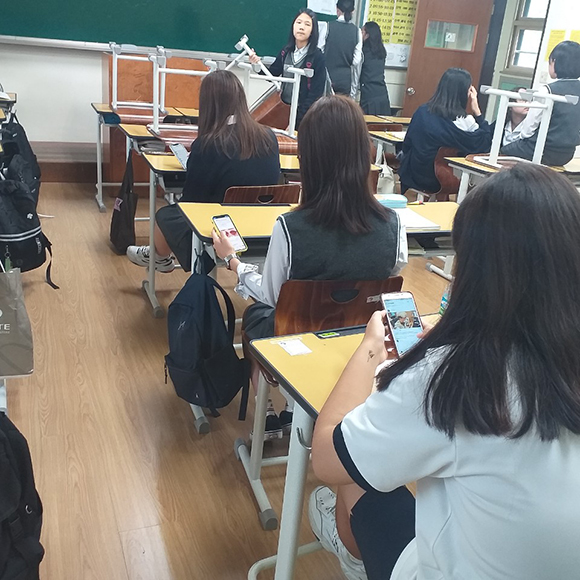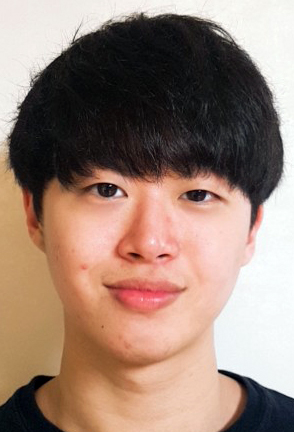Social media continues to overwhelmingly dominate our society, especially that of the teens. In a recent survey by the Pew Research Center of U.S. teens between the ages of 13 and 17, nearly every teenager (95 percent) has access to a smartphone, and 45 percent say they are online “constantly. ”Although the Facebook craze has simmered down, somewhat, there are many new media platforms that are currently “in.” YouTube seems to be the most popular online platform in recent days (85 percent), with Instagram Snapchat following close behind with 72 percent and 69 percent, respectively.
South Korea is no different, if not “hotter”, on social media usage. Internet access nationwide has reached 95 percent, and with Korea being the home of tech giants such as Samsung and LG, along with unparalleled high-speed Internet, it is no surprise that it is the number-one country in the world for smartphone ownership (94 percent). This means that most people in Korea, whether it is teens or older people, have access to social media. Since such technology has almost become a part of the Korean culture, it is easy to see everyone immersed in their phones on the bus, the subway, and the streets, mostly watching YouTube or looking at posts on Instagram. As for teens, they simply never let go of their phones despite all the academic work they should be pursuing. So, what is everyone doing?

Six female students of Sookmyung Women’s Middle School say that social media plays a vital role in showing off how socially “up-to-date” they are. Korea even has a term coined for such person—haeck-insa, which translates literally to “nuclear (super) insider”. Simply put, teens use social media to keep tabs on the most recent trends, fashion, and even music. “I feel super trendy when I know these things and my other friends don’t,” says Joo Young Kim, a student from Sookmyung. Kim is always looking for new and trendy information and hopes to be the first to spread the news to gain recognition and acknowledgement from her peers.
Other than to establish a reputation for being haeck-insa, teens use their social media to maintain a close relationship with their peers. Kim talked about the extent to which she uses her smartphone to upload new postings on social media and send direct messages (DMs) to her friends. “I literally have my phone wherever I go. I post pictures on Instagram or Facebook to show people what I’m up to, and then I wait for any sort of response.” Kim emphasizes the importance of receiving “likes” on social media, and believes they serve as proof of one’s popularity among peers. “Posting fancy photos of where you on Insta-story is a good way to show off your life, and if peers ‘DM’ you or ‘Likes’ your photos, you can feel extra cool.” Kim posts two to three pictures a day on social media and keeps tabs on her friends so as to not miss out.

Another group of young people interviewed at a subway station in Seoul explained a similar, but slightly different, use of social media. According to Nam Gil Park, a recent college graduate, some people use social media not to attract recognition and gain popularity but to collect helpful and efficient information. “I tend to view the comments of a commercial posting when I want to know the product in depth. For example, I check the user comments when I’m thinking about purchasing an expensive item that I don’t know much about.” Park also seeks uncommon information from the social media community. “I know that a lot of people in their twenties make it their goal to go somewhere special or unique. Since they like to post where they went or what they did, I like to scour their social media accounts for a place that’s one-of-a-kind. I don’t want to take my girlfriend out to a restaurant that everyone goes to.” Park added that it is easier to find good restaurants abroad via social media.

On the other hand, Tiffany Kang, a math teacher at S.I.E International School, expressed her concerns about the overuse of social media. “It’s an addiction. Most male students that I see spent a lot of time on their social media, looking for gaming tactics and watching recordings of game plays.” Kang says that boys tend to use social media for games while girls use it to build their reputation, gossip amongst peers, and gain trendy information. “It’s a vicious cycle. If one kid starts such media craze, others string along,” says Kang. According to Kang, students check their own posts multiple times a day to see how many more “Likes” they have earned. “This yearning to want more ‘likes’ is an unhealthy form of addiction,” she says.
The main value of using social media is the ease of communication and connection with others. However, too much connection and never-ending communication hinders people from living life fully in its genuineness. Kang expressed sadness in seeing students put up a façade on their social media to gain popularity and friends. “What happened to the good old tradition of going over to a friend’s house for a good chat and nice home meal to establish friendship?”
Self-esteem is an important aspect that all people should establish as young adults, but it should be well balanced; too little can leave one depressed, and too much can make one narcissistic. But how should we balance the self-esteem that social media fabricates for us? Is it healthy? Asking ourselves such questions will become increasingly important as the prevalence of social media increases.

Mingyu Kim
11thGrade
Shepherd International Education

